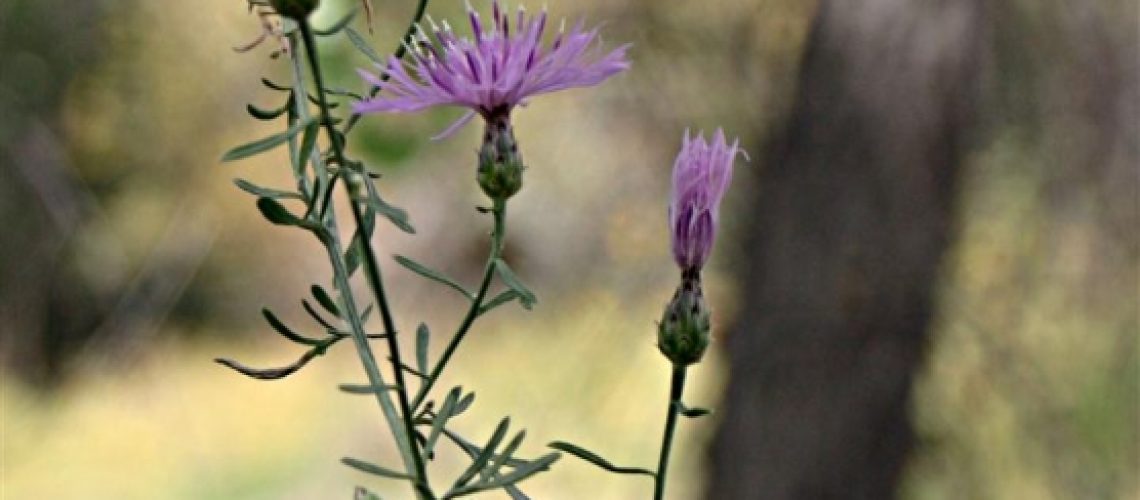This is often a favorite to hate in the central Arizona highlands.
Knapweed is a pioneer species found in recently disturbed sites or openings. Once it has been established at a disturbed site, it continues to spread into the surrounding habitat. This species outcompetes natives through at least three methods:
- A tap root that sucks up water faster than the root systems of its neighbors,
- Quick spread through high seed production, and
- Low palatability, meaning it is less likely to be chosen as food by herbivores. It is also suspected to be allelopathic, releasing a toxinfrom its roots that stunts the growth of nearby plants of other species.
Its seed is an achene about a quarter of an inch long with a small bristly pappus at the tip which makes the wind its primary means ofdispersal. The leaves are a pale grayish-green. They are covered in fine short hairs. First year plants produce a basal rosette, alternate, up to 6 inches (150 mm) long, deeply divided into lobes.[3] It produces a stem in its second year of growth. Stem leaves less lobed progressively getting smaller toward the top. The stem is erect or ascending, slender, hairy and branching, and can grow up to three feet tall. Because cattle prefer the native bunchgrass over Knapweed, overgrazing occurs, increasing the density and range of knapweed infestations.[4] Human disturbance is also a major cause of infestations. Knapweed readily establishes itself and quickly expands in all growth forms in places of human disturbance such as industrial sites,[5] along roadsides,and along sandy riverbanks, and also has the potential to spread into undisturbed natural areas.[3] (Wikipedia)

